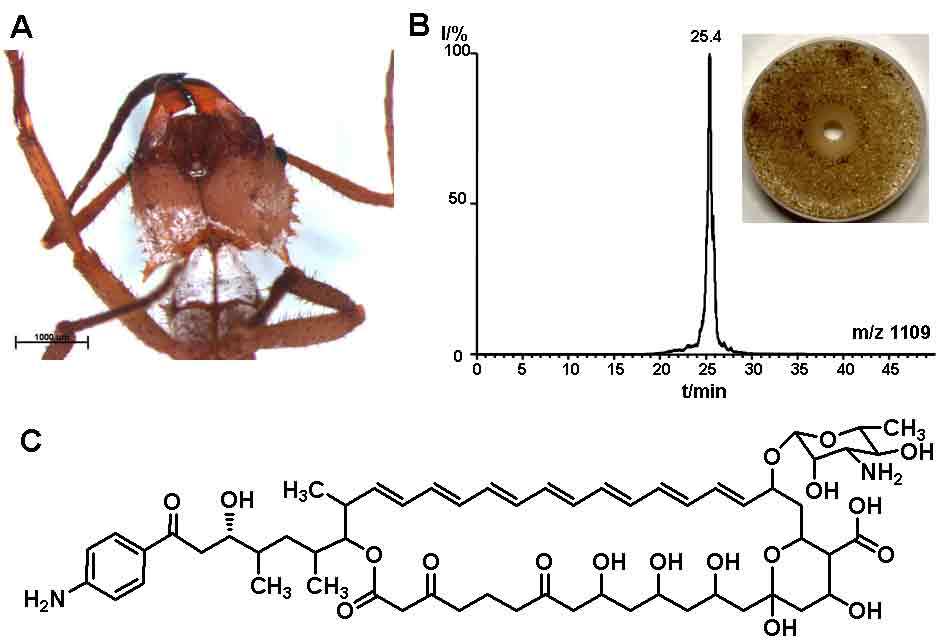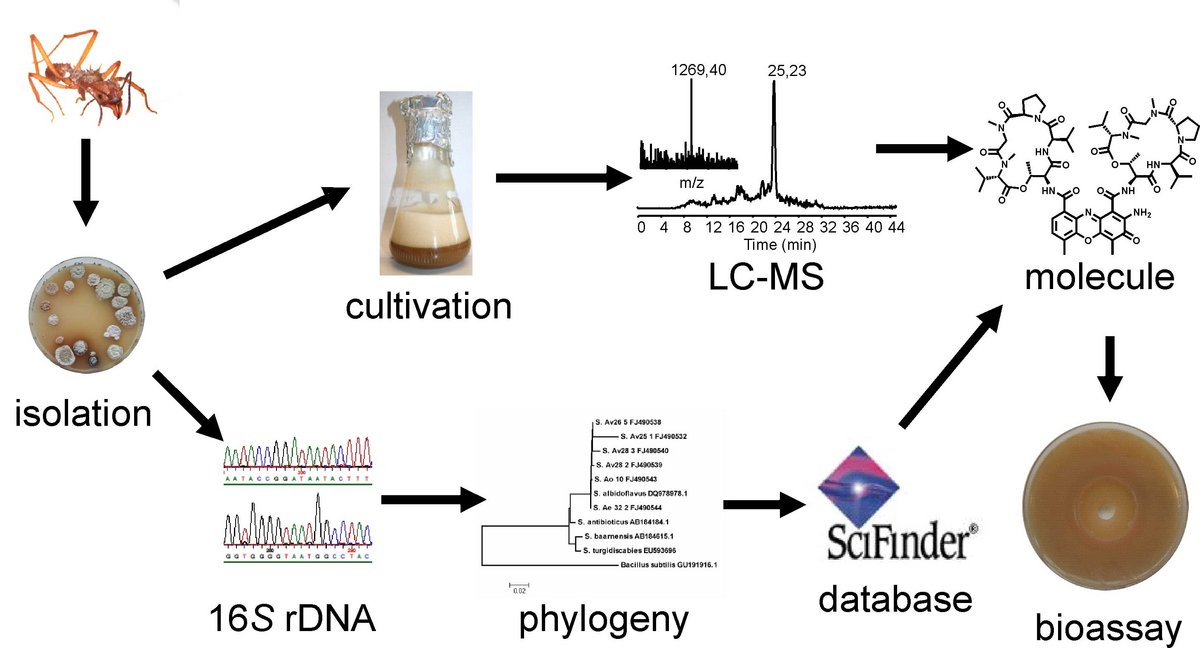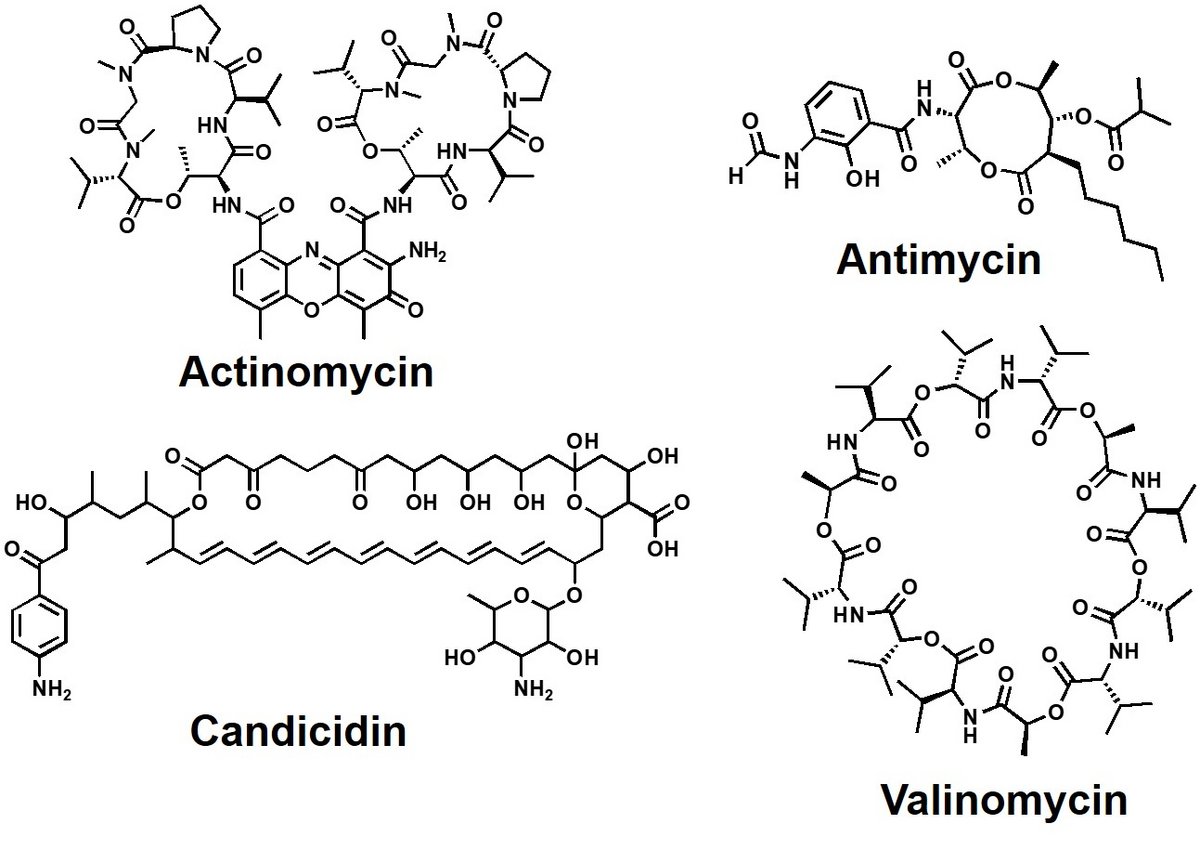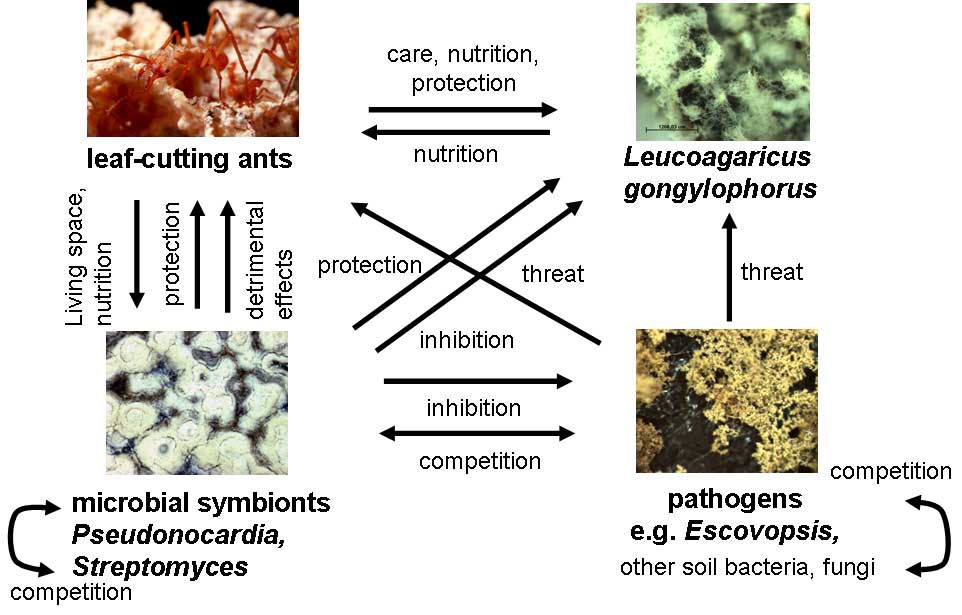Chemistry of microbial symbionts from leaf cutting ants
Leaf cutting ants grow the symbiotic fungus Leucoagaricus gongylophorus that they feed with leaf material. In turn the ants use their fungus garden as major food source. This mutualistic relationship is threatened by pathogens, in particular the fungus Escovopsis weberi. But leaf cutting ant associated symbiotic Actinomycetes help to protect the fungus garden of the ants by production of antifungal compounds. We identified first antifungal compounds from microbial symbionts in this interaction. Using bioassay-guided fractionation we found that many of the microbial symbionts produce the well known antifungal candicidin macrolides (Figure 1).

Figure 1: Bioassay-guided isolation of candicidin macrolides from microbial symbionts of leaf cutting ants. A. Microbial biofilm on the body of a leaf cutting ant (Acromyrmex octospinosus), B. HPL-chromatogram of purified candicidin macrolides and bioassay against the pathogen E. weberi, C. Structure of candicdin
Since there is diversity of Actinomyces symbionts and those bacteria are well known for their production of many secondary metabolites, we expected that a large number of antibiotics play a role in shaping the interactions in the ecosystem of leaf cutting ants. In order to quickly identify more of the bioactive compounds we used phylogenetic analysis of the microbial symbionts to search for the antibiotics that were already identified from close relatives using the Scifinder database. Thus we screened the extracts of our symbionts by LC-MS for the suspected antibiotic candidates (Figure 2).

Figure 2: Combination of phylogenetic analysis of microbial symbionts with LC-MS profiling to quickly identify relevant secondary metabolites
Thus we could identify in addition to candicidin macrolides antimycins, actinomycins and valinomycins (Figure 3).

Figure 3: Antibiotics produced by microbial symbionts of Acromyrmex leaf cutting ants: candicidin macrolides, actinomycins, antimycins and valinomycin
Using MALDI-Imaging (Figure 4) it was possible for the first time to directly detect an antibiotic (valinomycin) from microbial symbionts of leaf cutting ants in their ecosystem. The amount of valinomycin on the ant's body varies and concentrates in patches (see red dots) on the ant's body.

Figure 4: Direct detection of valinomycin on the integument of an A. echinatior worker by MALDI Imaging (green low amounts of valinomycin, red high amounts of valinomycin)
The ecosystem of leaf cutting ants is much more complex than previously expected (Figure 5). In contrast to the prevailing view, there are many microorganisms involved and also many pathogenic diseases. The multitude of antibiotic and antifungal compounds contribute to from this ecosystem.
In concert the antibiotics can exhibit synergistic effects i.e. subinhibitory concentrations of individual antibiotics are still active against fungal pathogens (E. weberi) when applied together. However antibiotics such as actinomycin also inhibit the growth of other symbionts or antimycin even very effectively inhibits the growth of the garden fungus L. gongylophorus. Thus the presence of symbionts may also pose costs for the leaf cutting ants.

Figure 5: Complex interactions
I. Schoenian, M. Spiteller, M., Ghaste, R. Wirth, H. Herz, D. Spiteller, Chemical basis of the synergism and antagonism in microbial communities in the nests of leaf cutting ants, Proc. Natl. Acad. Sci. U.S.A. 2011, 108, 1955-1960.
D. Spiteller, How do fungus growing ants protect their fungus garden against infections? Wie schützen pilz-züchtende Ameisen ihren Pilzgarten vor Infektionen? Biospektrum 2010, 2, 161-163.
S. Haeder, R. Wirth, H. Herz, D. Spiteller, Candicidin-producing Streptomyces support leaf-cutting ants to protect their fungus garden against the pathogenic fungus Escovopsis. Proc. Natl. Acad. Sci. U.S.A. 2009, 106, 4742-4746.
